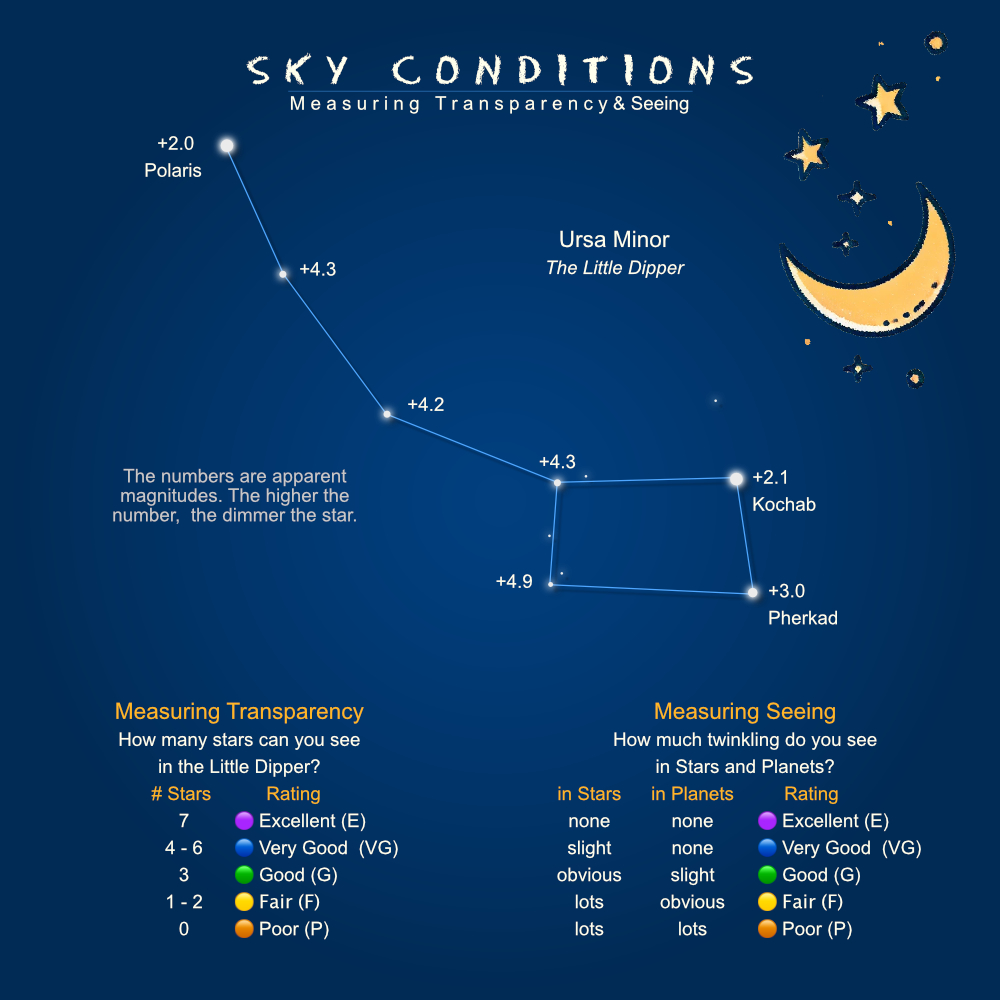 Measuring Sky Conditions Measuring Sky Conditions |
 |
Finally, a clear night has arrived for a great night of stargazing. You go outside but discover that something is wrong.... the stars seem dimmer, light pollution seems worse, and views in your telescope seem blurry. What’s going on? Answer: bad sky conditions!
Stargazers often use two terms when describing the conditions of the night sky: transparency and seeing. Here’s what they are:
Transparency
Transparency has to do with how much stuff like dust, smoke and moisture, are in the sky. This stuff can block starlight making stars appear dimmer, and it can scatter light pollution making it appear worse. Transparency is often better at higher elevations because there is less atmosphere above. And it can be better after rains that clean the sky.
Seeing
While the twinkling of stars might seem pretty, it means there is turbulence in the atmosphere. Turbulence can cause things to appear fuzzy, especially when viewing planets, the Moon or double stars through a telescope. Unlike transparency, seeing is often worse in hilly areas or after rains.
Measuring Sky Conditions
A simple way to measure transparency is to count the number of stars visible in the Little Dipper. Spotting seven stars means excellent transparency. But if you can only see Polaris and Kochab at best, the transparency is not good.
And a simple way to measure seeing is to look for twinkling in stars and especially in planets. No twinkling, even near the horizon, means excellent seeing. But if you can see obvious twinkling in a planet, the seeing is not good.
See the chart above for all the details. For help in finding Polaris and the Little Dipper, take a look at Finding North. For help in understanding apparent magnitude, take a look at Brightness: Magnitude.
In many locations, it is a rare night in which both transparency and seeing are excellent. So stargazers often check them out as soon as their eyes have become dark adapted -- after about 30 minutes away from lights. Some stargazers even add these measures to their stargazing notes.
|
|



